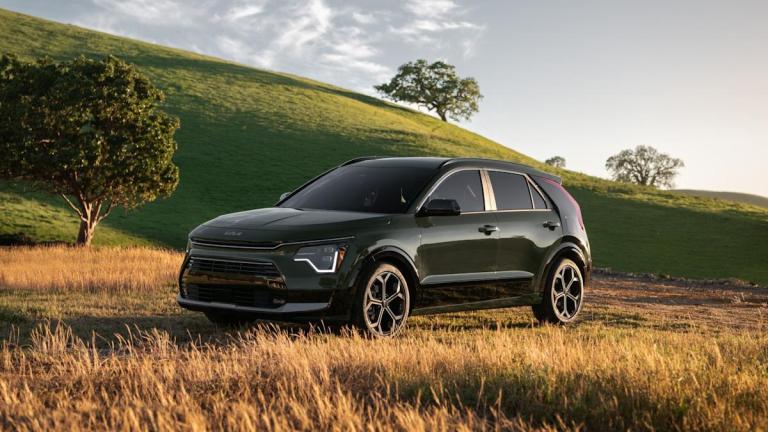Vintage races are like car shows taken to the next level
I love a good cars and coffee event, but cars were meant to be moving, not stationary. The fact is, there’s no better way to experience a vintage sports car than to experience that car at speed, preferably on track or in a rally.
So, if I can spend time surrounded by some of my favorite cars, I’ll jump at it. As I wrote recently, one of my bucket list items has been to race in the Lime Rock Park Historic Festival. It’s been on my list since I was a teenager, for three main reasons:
-
Lime Rock is one of the best racetracks in the U.S.
-
The race regularly attracts some of the finest vintage race cars
-
Racing in front of a crowd is special
Racing against a Porsche 550 Spyder was a dream come true.Jason Meshnick
Going toe-to-toe with three of my favorite cars
While my friends back home were hosting an amazing cars and coffee (shoutout to FuelFed Boulder), I was nose to tail at 100 mph with a priceless Porsche 550 Spyder, its glorious 4-cam engine filling my helmet with sounds that you’ll never hear at a cars and coffee.
I also had a series of exciting duels with a 1950s sports racer called a Tojeiro Climax that looks like a baby D Type Jaguar. One of those duels ended with the Tojeiro spinning off track after coming together with an Alfa Romeo right in front of me. Don’t worry, the car was back on track for the next session with minimal damage.

The Tojeiro Climax sports racer was one of the prettiest cars at the event. My Sports Renault was less so.Jason Meshnick
Another favorite was this Lotus Mark IX being driven by a guy who was asked by the owner to continue racing it after he was no longer able to. The car is now driven in honor of the former owner, and I can think of few better ways to be memorialized.

1955 Lotus Mark IX gleams in hand-hammered aluminum.Jason Meshnick
While the 1984 Sports Renault I was driving wasn’t as special as those other three, it was a blast to drive. It handled well, and the chassis was set up to be neutral and easy to control. Most importantly, it was safe and competitive, despite having just 90 hp. Shoutout to the team at Olde Speed for keeping me on track all weekend. Oh, and at least it didn’t stare at itself in the mirror.

1959 Triumph TR3. Pretty or purposeful?Jason Meshnick
Never lift!
If there were one phrase that would describe the event and its participants, it would be: “Never Lift!” That’s the motto of The Petersen Automotive Museum’s co-vice chairman Bruce Meyer, and his reminder to live life to the fullest. Everyone I met over the weekend was doing just that, even the cars. After all, a racing car needs to be driven to be experienced. Never lift!
Some racers think vintage racing is a high-speed parade, but my experience was anything but a parade. The other drivers played fairly but were highly competitive. If you wanted to pass a car, you had to earn it, either by outright speed or strategy. Nearly all cars were driven at the limit, and many were faster today than they were when new, thanks to better tires and engine building techniques. Not all cars made it home safely, although every driver did. This poor MGA ended its racing career on the last lap of the weekend’s first session.

This MGA raced hard but sacrificed itself to save its driver, who was uninjured.Jason Meshnick
So yeah, vintage racing is competitive racing. I learned more in these three days of on-track action than in the last three years of racing more modern cars.
Lesson learned. Sometimes you have to lift!
My biggest lesson was that sometimes, you have to lift (off the accelerator). In fact, lifting and coasting can make you faster. Here’s why. My car was weak on power but could corner well. The other cars had more power but cornered worse. I was fast in the turns; they were fast on the straights. So, I would often catch my competition entering a corner, brake hard to avoid hitting them, and then play catch-up as they rocketed out of the corner and down the straight.
In the later races, I learned to time my corner exits so that I would reach the other competitor at the exit of the corner, rather than the beginning. Since I would have the higher cornering speed, I would be able to pass them as we entered the straight.
It sounds easy, but it requires thinking ahead. For me to pass a faster car on Lime Rock’s Paul Newman Straight, I would begin to set up the pass two turns earlier. I’d slow down going into the left-hander, increasing the gap between us, and then slingshot past them onto the straight by maintaining a higher speed through turn four. Timing was everything. Slow in, fast out. Pass people. Lesson learned. In the end, my performance exceeded the goals I had set out before the weekend.
My preparation included watching a “track walk” video where top-level coaches Ross Bentley and Peter Krause offered a turn-by-turn guide to being fast at Lime Rock. I was pleasantly surprised when I found out that Krause would be in my racing group.
That’s one thing that makes vintage racing so truly special. There’s no other sport where you get to compete on the same track as the pros, and often against them. Watching Peter Krause’s Fiat skittering across the pavement at its limits of adhesion is a mental image that I hope to emulate in the future.
My goals for each day included being faster than the day before. A stretch goal was to score a podium, which I did! If I’m able to go back in 2026, I know several places where I can be faster, too.

3rd place “trophy” at the Lime Rock Park Historic Festival 43Jason Meshnick
Final thoughts
I’ve wanted to drive in the Lime Rock Historic Festival since I was a teenager. It’s a pro-quality event that even regular racers like us can participate in. Lime Rock is a fun, historic track, and racing against some of the rarest cars in the world that are being driven at their limit is an experience that I will always treasure.
This story was originally reported by Autoblog on Sep 24, 2025, where it first appeared in the Features section. Add Autoblog as a Preferred Source by clicking here.




